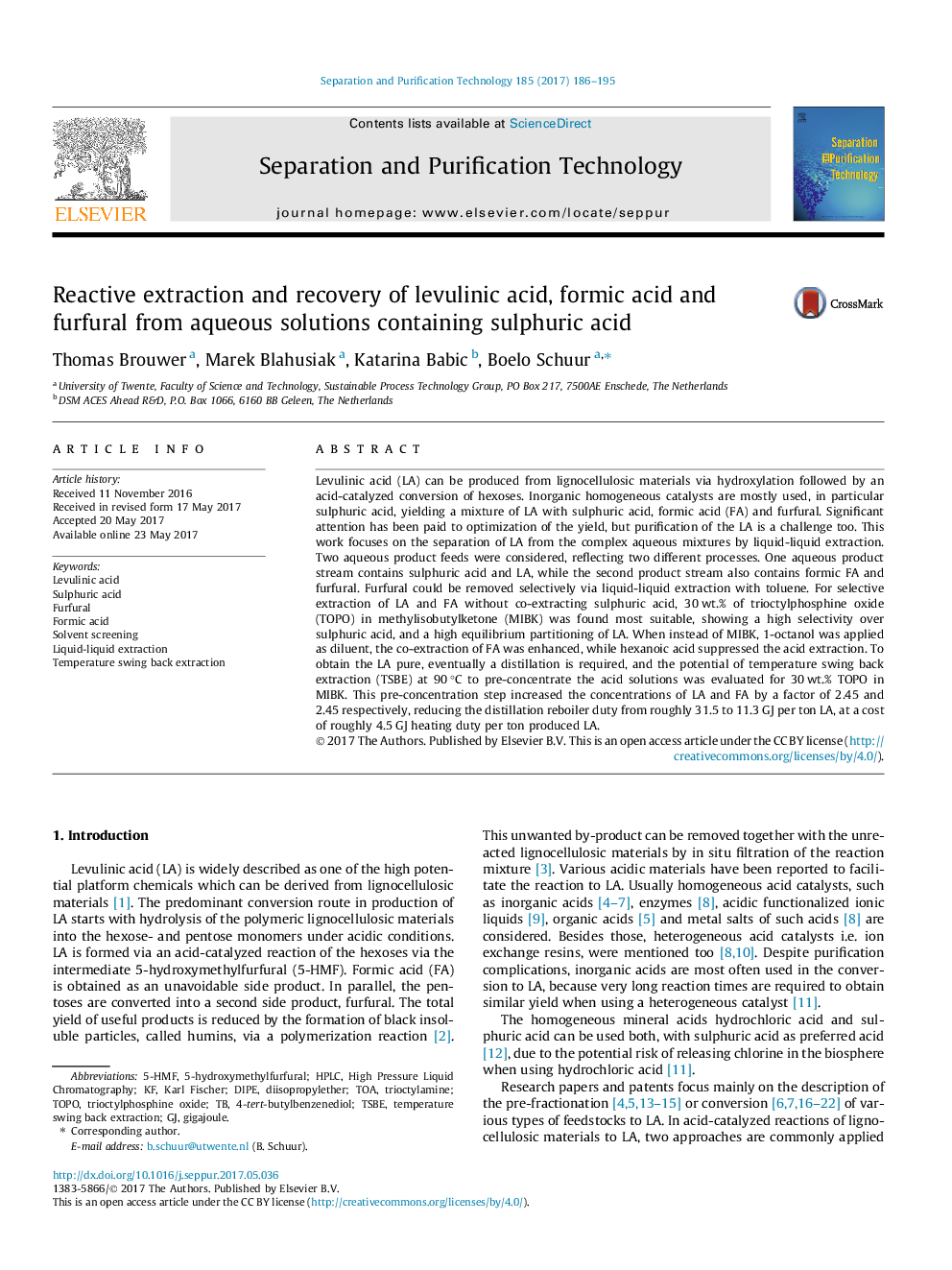| Article ID | Journal | Published Year | Pages | File Type |
|---|---|---|---|---|
| 4989643 | Separation and Purification Technology | 2017 | 10 Pages |
Abstract
Levulinic acid (LA) can be produced from lignocellulosic materials via hydroxylation followed by an acid-catalyzed conversion of hexoses. Inorganic homogeneous catalysts are mostly used, in particular sulphuric acid, yielding a mixture of LA with sulphuric acid, formic acid (FA) and furfural. Significant attention has been paid to optimization of the yield, but purification of the LA is a challenge too. This work focuses on the separation of LA from the complex aqueous mixtures by liquid-liquid extraction. Two aqueous product feeds were considered, reflecting two different processes. One aqueous product stream contains sulphuric acid and LA, while the second product stream also contains formic FA and furfural. Furfural could be removed selectively via liquid-liquid extraction with toluene. For selective extraction of LA and FA without co-extracting sulphuric acid, 30 wt.% of trioctylphosphine oxide (TOPO) in methylisobutylketone (MIBK) was found most suitable, showing a high selectivity over sulphuric acid, and a high equilibrium partitioning of LA. When instead of MIBK, 1-octanol was applied as diluent, the co-extraction of FA was enhanced, while hexanoic acid suppressed the acid extraction. To obtain the LA pure, eventually a distillation is required, and the potential of temperature swing back extraction (TSBE) at 90 °C to pre-concentrate the acid solutions was evaluated for 30 wt.% TOPO in MIBK. This pre-concentration step increased the concentrations of LA and FA by a factor of 2.45 and 2.45 respectively, reducing the distillation reboiler duty from roughly 31.5 to 11.3 GJ per ton LA, at a cost of roughly 4.5 GJ heating duty per ton produced LA.
Keywords
Related Topics
Physical Sciences and Engineering
Chemical Engineering
Filtration and Separation
Authors
Thomas Brouwer, Marek Blahusiak, Katarina Babic, Boelo Schuur,
